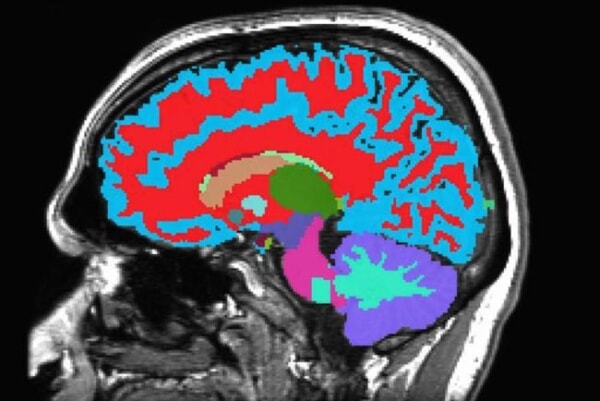A Single Brain Scan May Predict How Fast You’re Aging, NIH Study Finds

When you look in the mirror, you might notice a few more wrinkles or gray hairs. But what if a single brain scan could tell you how fast your body is really aging—before the signs show up in your daily life? You may be aging faster than you think.
That’s precisely what researchers backed by the National Institutes of Health (NIH) have discovered. A team led by scientists at Duke University has developed a tool that uses standard brain MRI scans to measure the pace of aging.
The findings, published in Nature Aging in July 2025, could transform how doctors assess risks for dementia, frailty, and chronic disease years before symptoms appear. This information can help us address aging issues before they become a problem.
The Science Behind the Scan
The new tool is called DunedinPACNI, short for Dunedin Pace of Aging Calculated from Neuroimaging. It builds on decades of data from the long-running Dunedin Study in New Zealand, which has followed 1,000 people since birth in the early 1970s.
By analyzing 315 structural features of the brain visible in an MRI, researchers were able to create an index of biological aging. The score strongly correlates with well-established measures of aging, including DNA methylation-based tools like DunedinPACE.
- People with “older-looking” brains scored higher, reflecting faster aging.
- These scores aligned with declines in memory, walking speed, balance, and grip strength.
- Participants who aged faster also reported worse health and looked older to independent observers.
Faster aging increases our risk for many diseases including diabetes, heart disease, stroke, and dementia. If we can identify who is at risk earlier, we can intervene earlier. — Dr. Ahmad Hariri, professor of psychology and neuroscience at Duke and a co-lead author of the study.
Why it Matters for You
You may not feel the effects of aging until your late 60s or 70s, but the biological process starts much earlier. The ability to detect changes in your 40s or 50s could give you more time to take action—whether that’s improving lifestyle habits, managing chronic conditions, or preparing for potential long-term care needs.
Independent experts are calling this a breakthrough. Dr. Dan Henderson, a neurologist at Harvard Medical School, noted in Live Science:
The fact that DunedinPACNI generalized across so many diverse datasets is a big win. It shows this measure isn’t limited to one group or one study.
That broad application included validation in the U.K. Biobank, the Alzheimer’s Disease Neuroimaging Initiative, and Latin America’s BrainLat project. Across these populations, higher PACNI scores predicted:
- Faster brain atrophy
- Higher risk of cognitive decline
- Greater frailty and disability
- Increased risk of death
Implications for Long-Term Care Planning
For adults over 45, the stakes are clear: faster aging increases your likelihood of needing help with daily activities, whether from family caregivers, assisted living, or nursing homes.
According to the U.S. Department of Health and Human Services, 56% of Americans will require long-term care services that meet the federal definition of needing help with two or more activities of daily living (ADLs) or supervision due to cognitive decline.
Costs can be staggering. The LTC News Cost of Care Calculator shows that in cities like Chicago, monthly assisted living expenses average more than $5,800 today, before surcharges, while nursing home care can exceed $10,000 per month.
Those numbers are projected to climb significantly in the decades ahead. Long-term care expenses are not covered by health insurance or Medicare outside 100 days of short-term skilled care.
- Learn more: Medicare Falls Short on Long-Term Care
Having tools like DunedinPACNI may one day help you prepare—not just medically, but financially. If doctors can tell you in midlife that your brain shows accelerated aging, it could influence when and how you plan for Long-Term Care Insurance, retirement, or caregiving support.
Generally, you purchase LTC Insurance before retirement. However, insurance companies have differing underwriting standards, which can impact the availability of coverage and its cost. Long-Term Care Insurance specialists can offer accurate quotes and professional recommendations based on your age, health, and other factors.
What Comes Next
The research team emphasizes that DunedinPACNI isn’t yet ready for routine use in clinics. More studies are needed to establish benchmarks for what’s “normal” versus “high risk.” But the potential is enormous.
Our measure could be applied to people who are asymptomatic but may be at risk for future decline. That’s where the biggest impact could be. — Ethan Whitman, a Clinical Psychology PhD student at Duke University and co-author of the study.
For now, the findings highlight a larger truth: aging isn’t just about how many birthdays you’ve had—it’s about how your body and brain are holding up. And while you can’t stop time, you can take steps to manage your health, your finances, and your future.
Bottom Line
One day soon, a simple brain scan may tell you how fast you’re aging—and what your future might hold. The earlier you know, the more time you’ll have to prepare. That preparation isn’t just about health; it’s also about protecting your independence and easing the burden on your family.
You can’t predict everything about the future, but you can plan for it. And with research like this, the future of aging—and how we face it—may be changing faster than we think.


